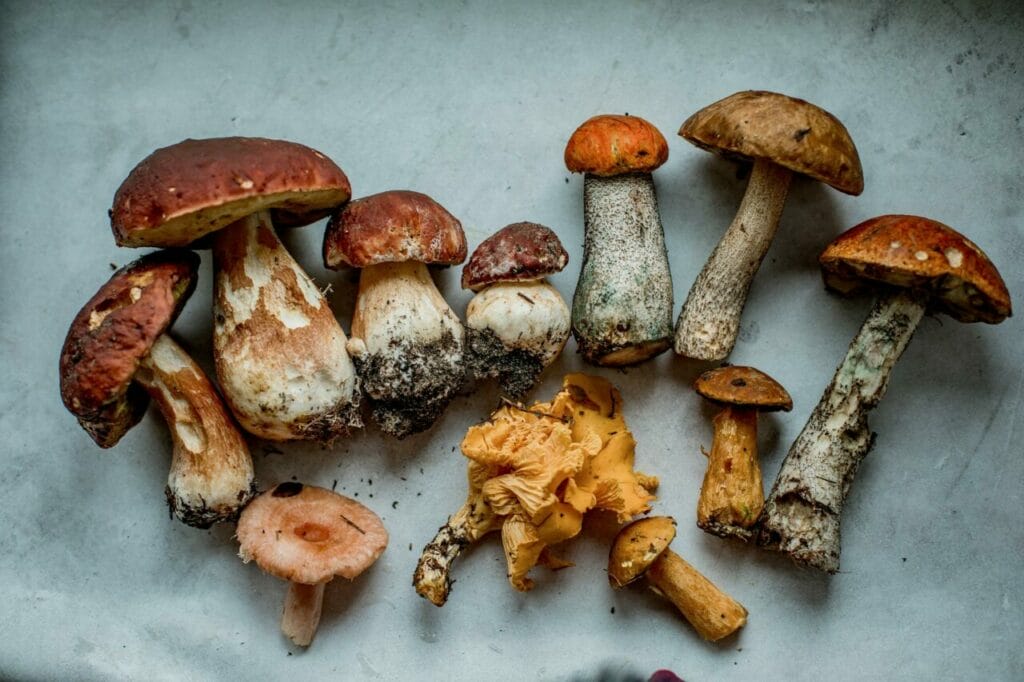Typical anxiety treatment methods encompass medication and therapeutic approaches. Nonetheless, these strategies might not be beneficial for everyone due to possible adverse effects. Such difficulties have led to a growing interest in alternative forms of treatment like psychedelic therapy, which employs substances such as “magic mushrooms Montreal” and similar materials.
Welcome to your premier destination to acquire psychedelics online in Canada. We provide swift, secure, and inconspicuous services.
[toc]Key Highlights:
- Psychedelic therapy merges the healing properties of psychedelic substances with traditional talk therapy to enhance the recuperation process.
- Psychedelic therapy can improve emotional health and overall life satisfaction through spiritual journeys.
- The process of integration is an essential method in psychedelic therapy intended to ensure the enduring impact of the therapy session.

Statistics on Anxiety Disorders in Canada
Information from the 2022 Mental Health and Access to Care Survey highlights an alarming increase in the prevalence of anxiety disorders in Canada. The percentage of Canadians aged 15 and above diagnosed with generalized anxiety disorder in the year preceding the survey has risen from 2.6% in 2012 to 5.2% in 2022.
Comparing Conventional Treatment and Psychedelic Therapy
Traditional treatments for anxiety disorders typically involve a combination of psychotherapy and medication. Psychotherapy, also referred to as psychological counselling, is a collaborative process between a therapist and the patient to mitigate anxiety symptoms.
On the other hand, anxiety medications mitigate symptoms by tailoring treatment to the specific type of anxiety disorder and considering any concurrent mental or physical health issues. Although treatment may differ based on individual cases, psychotherapy and medication are the main strategies.
In psychedelic therapy, sessions are unique as they include one or two doses of a psychedelic substance, in conjunction with other therapeutic techniques:
Therapy Using Psychedelics
Psychedelic therapy is a therapeutic approach that harnesses the therapeutic properties of psychedelic substances to enhance the healing journey. Known for their hallucinogenic effects, these substances have been pivotal in holistic medicine and spiritual rituals in various cultures for millennia.
The two primary substances employed in these therapeutic sessions are Lysergic acid diethylamide (LSD) and psilocybin. LSD induces alterations in mood, perception, and consciousness. As indicated on the Health Canada website, psilocybin is the active ingredient in magic mushrooms. Consuming these mushrooms can trigger sensory experiences, such as visual, auditory, or tactile hallucinations.
Dosage Spectrum for Three Sessions
In psychedelic therapy, specialists assess patients to determine the appropriate dosage of psilocybin for their sessions. The dosage varies, with some patients beginning with moderate amounts, while others may withstand larger quantities of the substance. The treatment plan usually consists of one to three medication sessions, each lasting six to eight hours and spaced several weeks apart. This methodology differs from traditional medications that require daily intake until further guidance is provided by a healthcare practitioner.
Spiritual and Transformational Experience
Unlike anxiety medications that aim to control symptoms, therapy strives to tackle the root causes of the condition. Psychedelic therapy doesn’t merely manage symptoms; it can significantly impact emotional health and quality of life by inducing transformative visions or feelings of divine connection.
The immersive experiences can catalyze profound insights, heightened self-awareness, and better emotional processing. These effects can stimulate personal growth, inspire positive behavioral shifts, and enhance overall mental health.
Outcomes
| Expanded Consciousness | Altered states of consciousness offer a new worldview. | The enhanced awareness generally results in the following: Deep insightsEpiphaniesImproved comprehension of oneself and the surrounding environment |
| Emotional Healing | It enables emotional healing by offering the chance to face and process unresolved trauma, grief, or emotional pain. | This process assists in:Accessing deeply hidden emotionsReleasing emotional bottlenecksPromoting emotional health |
| Heightened Self-Awareness | It enhances connectivity among sensory brain regions while reducing connectivity within the default mode network. This network integrates interconnected brain regions that handle self-focused cognition and the individual’s subjective perception.” | These regions aim to: Modify negative thought patterns, beliefs, and recurring behaviours. Empower users to gain profound insights into their authentic selves, motivations, and interpersonal dynamics. |
Somatic Therapy
Somatic therapy, despite not being traditionally linked with psychedelic therapy, is accruing recognition for its potential benefits. This method, centered on the body, explores the mind-body connection. It is based on the idea that past traumas can result in sensations becoming trapped within the body. Somatic therapists help individuals identify these bodily sensations and utilize therapeutic techniques to alleviate this stress.
Integration
This provides a framework for clients to attain clarity, acquire perspective, and extract wisdom from their psychedelic experiences. The transformation process unfolds during integration sessions between the therapist and the client and the client’s proactive initiatives outside of psychedelic journeys. Integration enhances the transformative impact of psychedelics by actively engaging with emerged insights and emotional discoveries.
Types of Integration
- Journaling. By documenting experiences, individuals can reinforce memories for easier recall in the future. This also enables clients to analyze their experiences from various perspectives to discover different meanings, implications, and connections.
- Art. This provides an efficient way to encapsulate intricate emotions and feelings from a psychedelic journey in a creative and visually expressive medium.
- Practicing Nature-based Approaches. These could be as simple as mindful walks in the woods or finding tranquility near a peaceful body of water. Therapists can assist clients in recognizing intricate patterns in nature or suggest the use of natural elements such as plants, rocks, water, and candles as grounding tools.
- Engaging in Integration Groups. Group sessions with individuals undergoing similar experiences offer a valuable platform for reflection, support, and connection. The capability of psychedelic therapy to kindle a sense of interdependence and mutual understanding beyond individual limits is fundamental.
The Role of These Techniques in Anxiety Treatment
The essential pharmacological principle behind all psychedelics is their ability to act as agonists, or activators, of serotonin (5-HT) 2A
Psychedelic therapy revolves around the use of psychedelic substances like psilocybin, which are known to interact with the brain’s serotonin receptors. A substantial area of study in this field is the effects of these substances on the brain’s default mode network, a network associated with repetitive thoughts. It’s been found to be connected to mental health disorders such as depression and anxiety. Treatment with psychedelics can greatly reduce anxiety levels, with effects lasting up to a year following treatment.
After a session with psilocybin, which often includes profound spiritual experiences, patients engage in a discussion with their therapist. In these talk-therapy sessions, skilled healthcare professionals strive to listen carefully to the patient while utilizing specific methods and techniques to enhance the positive effects of the treatment.
These strategies collectively assist individuals with anxiety in achieving long-term relief after fewer sessions compared to conventional treatments.
Embark on Your Transformation Journey, One Session at a Time
Many people rely on traditional anxiety treatments, but they may not work for everyone or meet each individual’s needs. Psychedelic therapy offers a different approach, using unique methods that can trigger life-changing experiences. These strategies work together to yield deep, lasting impacts—sometimes up to a year after just one to three sessions.
Beyond improving mental health, this therapy could also offer significant cost savings for patients. Are you ready to discover a new path to wellbeing? Explore the potential of psychedelic therapy with Micro Zoomiez Canada.
Commonly Asked Questions
Is there a preferred type of magic mushroom used for psychedelic therapy?
In studies of psychedelic-aided therapy, the specific type of mushroom used is often not mentioned. Psilocybe cubensis is typically the preferred choice.
Online magic mushroom dispensaries offer a variety of strains to cater to different tastes. You can choose any strain to experience the therapeutic effects of psychedelics. However, be careful and choose a reputable vendor to avoid acquiring unsafe magic mushrooms from dishonest sources.
What is the duration of psychedelic therapy?
Psychedelic therapy comprises several stages and its length can vary. A single session in which the psychedelic is ingested lasts between 4 to 8 hours. The whole therapy process, which includes preparation, the session itself, and subsequent discussions, can span from a few weeks to several months.
As for long-lasting effects, people have reported improvements in their mental health for many months or even up to a year after the therapy.
After just one or a few sessions, significant progress can often be seen in a year.Included are a few sessions.
Does a therapist guide the patient on their spiritual journey?
During this journey, patients are often guided by professionals like therapists or other staff. Studies show that Spiritual Health Practitioners (SHPs) offer unique and valuable insights to improve participants’ well-being and facilitate their spiritual journey. Some individuals seek the help of an SHP, while others rely on a therapist or specialist available.
Are “set and setting” components of the psychedelic therapy process?
Yes, both the individual’s mindset (set) and the surrounding environment (setting) play key roles in safely facilitating spiritual experiences during a psychedelic therapy session. The individual’s mental state influences their spiritual journey and affects the experience both before and during the psychedelic session. Factors such as beliefs, expectations, emotional states, and intentions determine the direction and depth of the experience.
Primary Source: Psychedelics as Emerging Treatments for Anxiety Disorders: Opportunities and Challenges in a Budding Field – PMC (nih.gov)
About the Authors:
Franklin King, IV, MD. and Rebecca Hammond, M.D.





